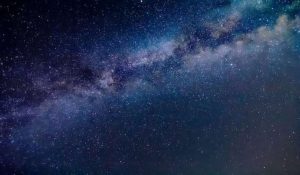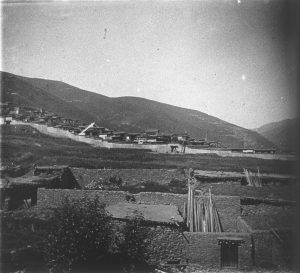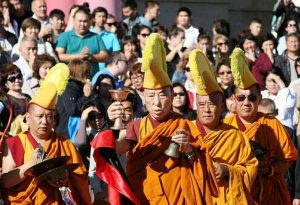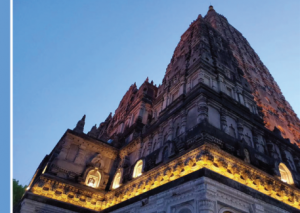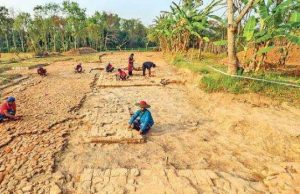
Monks from the Jogye Order of Korean Buddhism, South Korea’s largest Buddhist order, on Friday hosted a historic display of Buddhist relics and their ancient reliquary in Seoul, a day after their historic return to South Korea following 85 years at the Museum of Fine Arts, Boston (MFA Boston) in the United States.
The collection of sarira* are believed to be from the historical Buddha, Shakyamuni, and two 14th-century Buddhist monks, Jigong (1289–1363) from India (also known as Dhyanabhadra and Sunyadisya) and Naong Hyegeun (1320–76) from Korea’s Goryeo dynasty (918–1392). Several other fragments among the sacred relics are believed to be related to Kassapa Buddha and Dipamkara Buddha.

“After about a century of separation, the relics of the Buddha have finally returned to their rightful abode,” said Venerable Hosan of the Jogye Order, who was a member of the Jogye Order delegation that brought the relics back to Korea. (Yonhap News Agency) Ven. Hosan added that after the one-day public viewing, the sarira would be taken to Heoam-sa, a temple in Gyeonggi Province, where the Jogye Order believes they were originally housed.
“The sarira—three glass and bronze spheres and small fragments—came to the MFA inside a Korean Buddhist reliquary of the Goryeo Kingdom (14th century), which the museum purchased from the dealer Yamanaka and Company of Boston in 1939,” MFA Boston explained in a statement dated 16 April. “The sarira were held in small containers in the shape of miniature stupas, or Buddhist monuments, that accompany the larger reliquary. According to Chinese-character inscriptions on the stupas, the sarira are associated with Buddha Shakyamuni, Kassapa Buddha, and Dipamkara Buddha, as well as the Buddhist monks Naong (1320–76) and Jigong (d. 1363). It is not known for certain where the reliquary originated.” (MFA Boston)

According to media reports, the reliquary with the relics were illegally taken out of Korea during the Japanese colonial period (1910–45). The sacred remains were repatriated by a delegation from the Jogye Order on 18 April under a landmark agreement reached in February this year that followed 15 years of talks and negotiations.
South Korea’s Yonhap News Agency reported that MFA Boston had initially refused to return the relics on the basis that it believed they had been legitimately purchased from an art dealer and that there were no indications they had been stolen, looted, or forcibly sold.
“As the abbot of Bongseon-sa, the parish that oversees Hoeam-sa, I feel an indescribable emotion to hear that the sarira are finally returning,” Ven. Hosan of the Jogye Order was quoted as saying in the statement from MFA Boston ahead of the repatriation. “The relics must be properly transferred and enshrined in accordance with their historical, religious and noble values.” (MFA Boston)

While the sarira holds great spiritual significance for the Buddhist community, the silver-gilt reliquary is also highly valued, regarded as a cultural and artistic masterpiece of the Goryeo kingdom.
The Goryeo (고려) dynasty was established in 918 by King Taejo Wang Geon. It united the Later Three Kingdoms (892–936) in 936 and ruled most of the Korean Peninsula until it was displaced by the founder of the Joseon kingdom, Yi Seong-gye, in 1392. Goryeo expanded the country’s borders to present-day Wonsan in the northeast (936–943), the Yalu River (993), eventually expanding to cover almost all of the present-day Korean Peninsula (1374).
While the achievements of Goryeo include establishing relations with the southern kingdoms of what is now China to stabilize national sovereignty, and progressive taxation policies, Goryeo is perhaps most notable for providing an environment in which the arts were able to flourish, leading to the creation of countless sophisticated works by this Buddhist state. Buddhism in Goryeo also evolved in ways that rallied support for the state to protect the kingdom from external threats.

Ahead of the public viewing of the relics and reliquary on Friday, a solemn ceremony was held in the Memorial Hall of Korean Buddhism History and Culture in Seoul, presided over by the president of the Jogye Order, Ven. Jinwoo, after which monks and Buddhist followers had the opportunity to view the sacred remains.
“This is the result of continuous efforts by the Jogye Order, the Cultural Heritage Administration, the Consulate General of the Republic of Korea in Boston, and other civic groups,” said Ven. Hyegong, director of the Jogye Order’s Department of Cultural Affairs. “Above all, I would like to express my generous gratitude to the MFA for its careful consideration and respect for religious sentiment.” (MFA Boston)
According to survey data from 2021, the majority of South Korea’s population—60 per cent—holds no religious affiliation. Christians make up the largest religious segment of the population at 23 per cent, while Buddhists account for 16 per cent.
* Crystalline bead-shaped objects retrieved from the cremated ashes of Buddhist masters.
See more
Museum of Fine Arts, Boston, Donates Relics to Jogye Order of Korean Buddhism (MFA Boston)
Buddhist relics return home after 85 yrs in U.S. (Yonhap News Agency)
Boston museum returns Buddhist relics to S. Korea (Yonhap News Agency)
[From the Scene] Monks, Buddhists hail return of remains of Buddhas (The Korea Herald)
Buddhist relics return home after 85 years in US (The Korea Times)
Related news reports from BDG
Freer and Sackler Galleries Launch Digital Catalogue of Goryeo Buddhist Art
Goryeo Kingdom Exhibition in Seoul Celebrates Korea’s Buddhist History
Related features from BDG
“The Great Light of Compassion” (大慈悲光明) Expressed in Goryeo Water-moon Avalokiteshvara Paintings







